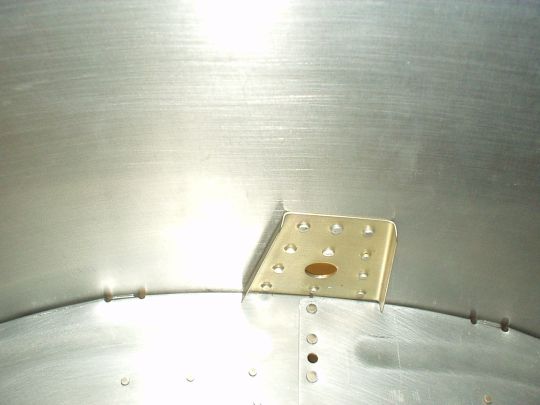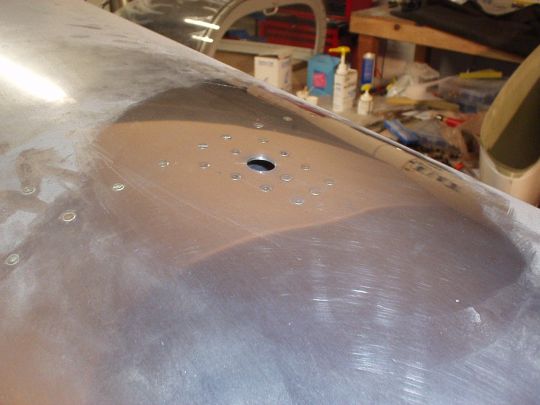|
  

Emergency Locator Transmitter (ELT)
Running Total Hours:
0.0
 | 2009.09.05:
(0.0) The airplane
will have a 406 MHz emergency locator transmitter (ELT)
installed. An ELT is legally required in the U.S. under FAR
91.207. While the legacy 121.5 / 243 MHz ELTs still satisfy the
legal requirement in the U.S., they have historically proven quite
ineffective, and even more so now since COSPAS/SARSAT satellite
monitoring of those frequencies was discontinued in Ferurary
2009. The new 406 MHz ELTs are supposedly far more effective
(they certainly have some distinct technical advantages, but their
actual perfomance in the field is yet to be proven), they are now
legally required in Canada, and will likely become legally required in
the U.S. within the next few years.
Over the past couple of years, a few 406 MHz ELTs have come on the
market from a couple of vendors, but they are still expensive
($1K-$2K) and are limited in their capabilities (most still do not
support transmission of GPS position). I plan to wait as long as
possible before purchasing my ELT to benefit from further market
development.
For now, I'm just planning out the general installation so that I can
make provisions and move forward on other tasks without painting
myself into a corner on the ELT. The main issues I'm studying
now are location/installation of the ELT main unit, the antenna,
remote switch panel, and wiring. Some considerations are listed
under FAR 91.207, AC 43.13, RTCA DO-204, DO-183, and installation
guidelines from the specific manufacturers. To summarize the key
issues:
1. The ELT main unit should be oriented in close alignment with the
longitudinal axis of the aircraft.
2. The ELT main unit should be mounted to primary structure that is
stiff and strong (i.e. not skin).
3. The ELT main unit should be mounted as far aft as practical to
minimize the chance of it being damaged in a crash.
4. The ELT main unit should be reasonably accessible for routine
inspection and maintenance.
5. The ELT main unit should be reasonably accessible for removal
following a crash, for portable use by survivors. An
(unconnected) portable antenna should be placed with it.
6. The (connected) fixed antenna should be mounted on top of the
fuselage in an orientation as close as possible to vertical.
7. The fixed antenna should have adequate surrounding ground plane.
8. The fixed antenna should have adequate clearance from other
antennas, especially transmitting antennas, and from aircraft
structures such as the vertical stabilizer that could make contact
with the antenna or shadow the signal.
9. The ELT main unit and the fixed antenna should ideally be mounted
close to each other, and the antenna cable routed in such a way as to
minimize the chance that the cable would be severed in a crash.
10. The remote switch panel should be visible and accessible to the
pilot in the cockpit.
Many of the ELT installations I've seen in RV's do not meet these
requirements. Many folks mount the ELT on flimsy
structures (that's even the case with Van's generic ELT & strobe
mounting bracket) and/or in incorrect orientations. Many,
perhaps most, mount the ELT antenna either inside the baggage
compartment or under the empennage fairing. This is nice as it
eliminates the antenna's aerodynamic drag, but in both cases it puts
the antenna in contact with and/or in the shadow of major airframe
structures, and with incorrect antenna orientation/polarization. It seems
that many install the ELT only to meet the legal requirements, but do
not place a high priority on making the installation effective.
That's understandable I suppose, given the dismal performance of ELTs
historically. But having some optimism about the new 406 MHz
ELTs, I intend to do what I reasonably can to allow the ELT to do its
job if called upon.
My plan is to mount the ELT main unit on the F-714 aft deck, just aft
of the F-709 bulkhead and just forward of the forward spar of the
horizontal stabilizer. The aft deck is perfectly oriented in the
horizontal plane of the aircraft (satisfying no. 1) and is a very
solid structure bridging between the main longerons and the F-709
bulkhead (2). This location is in the tail of the aircraft,
which is less likely to receive the primary impact of a crash
(3). This location also makes the ELT easily accessible by
removing the empennage fairing via a few screws (4), or even just
cutting or smashing the fiberglass fairing in an emergency (5).
I plan to mount the antenna on top of the fuselage just aft of the
F-708 bulkhead. The top skin slopes only about 6.5° down from
horizontal, so this places the antenna at only 6.5° from vertical
(6). This location also gives the antenna about about a 16 inch radius
of uninterrupted skin as ground plane (7). It also gives it over
3 ft of clearance from the nearest antenna (GPS, just aft of the
canopy), even more clearance from the
nearest transmitting antenna (comm, on the fuselage bottom), and about
18 inches clearance from the leading edge of the vertical stabilizer
(8). The antenna cable can pass loosely through the large lightening
hole in the F-709 bulkhead and doesn't have to pass any other
bulkheads, making it
very unlikely that distortion of the airframe in a survivable crash
would sever the cable (9). The remote switch panel will be
installed on the instrument panel (10), likely somewhere on the
copilot side.
There are just a few potential downsides to this arrangement.
First and most obvious is that the antenna will be out in the breeze
and generating drag (I'm guessing about 1 lb at cruise speed based on
comm antenna data, but I
haven't found any actual published drag data on ELT antennas).
Unfortunate, but this drag is unavoidable in a metal airplane without violating the
antenna placement requirements, so be it. Second, the location
of the ELT main box on the aft deck is a tight fit. The
space is just barely big enough for most ELT models, and it may take a
little persuasion to make it work. We'll see. And finally,
having the ELT's weight (typically about 2 lb.) at this very far aft
location will have an appreciable effect on the aircraft's CG.
However, with a constant speed prop and two firewall-mounted
batteries, I'm not too worried that I'll end up with an aft CG.
So this should be fine. |
 | 2010.04.10:
(0.0) Late
update... I fabricated and installed a backing plate for the antenna a
while back, but just got around to taking some photos:

 |

  
|
|